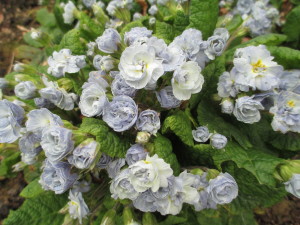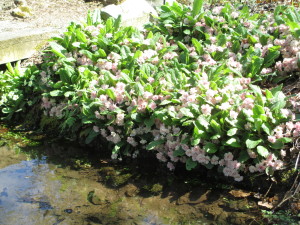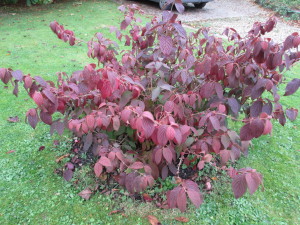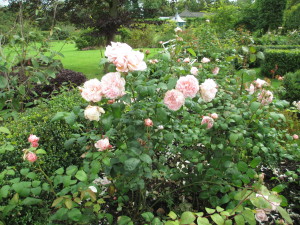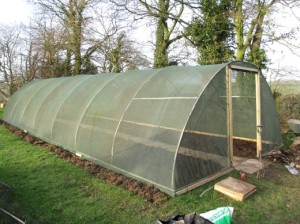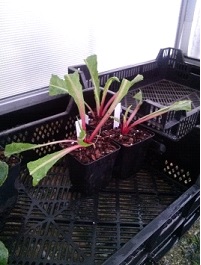Such a beautiful time of year; everything so green with fresh growth and wonderful bird song. Thrushes are nesting in the pleached hornbeam. The first time that happened I was so pleased because I felt that made them official trees, now they nest there every year. It is amazing how fast a garden can get established.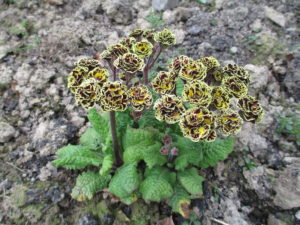 The primroses are nearly over now just a few late varieties in flower. This photo is of Primula ‘Tarragem Gilded Garnet’ bred by Dr Margaret Webster. The peonies are starting. Already the tenuifolia have flowered, and ‘Mai Fleuri’ an early flowering hybrid is in flower. Most wonderful of all the unpronounceable and unspellable species peony known to everyone by its nickname “Molly the witch” is in flower. It is such a fabulous pale yellow and looks so fresh. The early foliage of the herbaceous peonies has been wonderful. The emergent growth is often a glowing red or rich purple. Now the bushes have tight buds which I am watching with glee. It seems that most things are at least two weeks early this year, so I am busy planning visits to see other people’s peonies too now.
The primroses are nearly over now just a few late varieties in flower. This photo is of Primula ‘Tarragem Gilded Garnet’ bred by Dr Margaret Webster. The peonies are starting. Already the tenuifolia have flowered, and ‘Mai Fleuri’ an early flowering hybrid is in flower. Most wonderful of all the unpronounceable and unspellable species peony known to everyone by its nickname “Molly the witch” is in flower. It is such a fabulous pale yellow and looks so fresh. The early foliage of the herbaceous peonies has been wonderful. The emergent growth is often a glowing red or rich purple. Now the bushes have tight buds which I am watching with glee. It seems that most things are at least two weeks early this year, so I am busy planning visits to see other people’s peonies too now.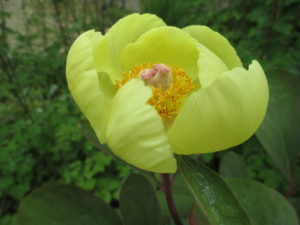
I an weeding like mad (gardens don’t make themselves!), but there has been very little rain this year so even in my wet garden some areas are starting to be a bit dry. Last autumn I had some metal edges put round some of the flower beds as an experiment. It is really making life easier, so although expensive I shall probably add more when I can afford it!
![IMG_5011[1]](https://glebegarden.co.uk/wp-content/uploads/2017/03/IMG_50111-e1489050767105-225x300.jpg) Spring started early this year with a lot of the double primroses coming into flower as early as February. At the same time the daffodils are took over from the snowdrops; under the pleached hornbeam Narcissus lobularis is thriving. They have been seeding themselves for several years and and really starting to look good. Annoyingly they are doing better on one side of the walk than the other so it is not as balanced as I would like but they are giving the splash of colour that lifts the spirits on gloomy North Cornwall early Spring days. I suspect that old varieties of daffodils will become a new interest for me. Already I seem to be getting quite a few!
Spring started early this year with a lot of the double primroses coming into flower as early as February. At the same time the daffodils are took over from the snowdrops; under the pleached hornbeam Narcissus lobularis is thriving. They have been seeding themselves for several years and and really starting to look good. Annoyingly they are doing better on one side of the walk than the other so it is not as balanced as I would like but they are giving the splash of colour that lifts the spirits on gloomy North Cornwall early Spring days. I suspect that old varieties of daffodils will become a new interest for me. Already I seem to be getting quite a few! 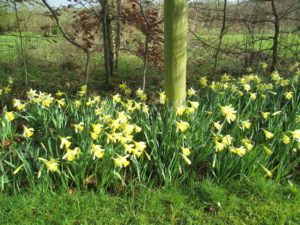 There are quite a few old varieties of daffodil growing on my hedge (Cornish hedge – a stone backed bank of earth). They seem to all be at least pre-1920 varieties although some I think it will be difficult to identify. Realising that set me off looking at other old varieties. So much fun to be had there I think! Like the primroses, it is lovely to have flowers that add colour to the early Spring.
There are quite a few old varieties of daffodil growing on my hedge (Cornish hedge – a stone backed bank of earth). They seem to all be at least pre-1920 varieties although some I think it will be difficult to identify. Realising that set me off looking at other old varieties. So much fun to be had there I think! Like the primroses, it is lovely to have flowers that add colour to the early Spring.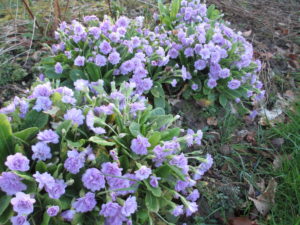
 Although it is the double primroses I collect I have quite a few single primroses and this year am pleased at how they have been developing into nice big clumps. They always look better like that. ‘Dark Rosaleen’ is one of Joe Kennedy’s breeding with the lovely dark leaves his plants often have. Such a distinctive and pretty flower.
Although it is the double primroses I collect I have quite a few single primroses and this year am pleased at how they have been developing into nice big clumps. They always look better like that. ‘Dark Rosaleen’ is one of Joe Kennedy’s breeding with the lovely dark leaves his plants often have. Such a distinctive and pretty flower.
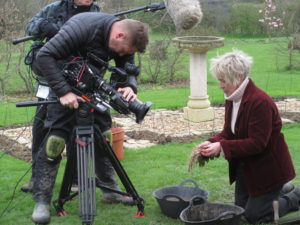
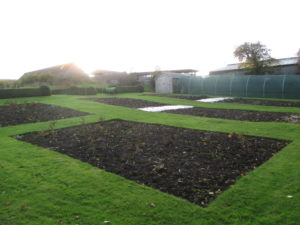 Well, close to seventy varieties planted in beds that are meant to be mirror images although the plants may have other ideas. The Lemoine Wittmanniana hybrids from 1907, which are very early flowering have been given their own area in the shrub walk. I am really looking forward to seeing them flower. The lactiflora peonies are rapidly taking over what was originally intended to be veg garden. Much more fun I think!
Well, close to seventy varieties planted in beds that are meant to be mirror images although the plants may have other ideas. The Lemoine Wittmanniana hybrids from 1907, which are very early flowering have been given their own area in the shrub walk. I am really looking forward to seeing them flower. The lactiflora peonies are rapidly taking over what was originally intended to be veg garden. Much more fun I think!